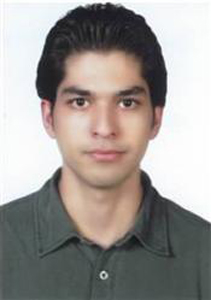Program Information
Development of a Hyrbid Biomechanical Model Based Deformable Image Registration; Application in Lung
N Samavati1*, A Al-Mayah2, K Brock3, (1) University of Toronto, Toronto, ON, (2) University of Waterloo, Waterloo, ON(3) University of Michigan, Ann Arbor, MI
TU-C-141-2 Tuesday 10:30AM - 12:30PM Room: 141Purpose: To investigate the reduction in maximum errors in 4D CT lung Deformable Image Registration (DIR) using a hybrid biomechanical model based algorithm with an intensity based registration refinement.
Methods: Morfeus, a biomechanical modeling algorithm for deformable image registration was used to register 3D inhale to exhale images of the lungs acquired via 4DCT. The predicted exhale image was obtained by interpolation. An intensity based registration algorithm based on Sum of Absolute Differences (SAD) and BSpline free form deformations (drop3D, Munich, Germany) was then employed to refine the results by a second registration from the Morfeus predicted exhale to the actual exhale image. The BSpline grid point spacing for the refinement was set to 9mm. To measure the accuracy, Target Registration Error (TRE) was calculated based on the Euclidean distance of corresponding bifurcation points on both images. Improvements in the overall TRE as well as reduction in maximum errors were evaluated.
Results: The hybrid method has been evaluated on 5 patients to date with 45 to 76 identified bifurcation points per patient. The Morfeus TRE ranged from 2.2±1.0 mm (mean±SD) to 3.6±1.9 mm. This was reduced to 1.4±0.8 mm up to 1.6±2.0 mm with the hybrid method. More importantly, the number of bifurcation points (% of total points) with an error greater than 5 mm was reduced from 54 (22%) points (across all patients, range 3 to 24 points per patient) with Morfeus to 10 (4%) points (range 0 to 4 points per patient) with the hybrid method.
Conclusion: The proposed hybrid method combines the flexibility of the biomechanical model based algorithm, including the ability to model the sliding interface between the lungs and the chest wall, with the advantages of intensity based registration for the contrast rich lung images to provide a highly accurate DIR algorithm.
Funding Support, Disclosures, and Conflict of Interest: This research is supported by the NIH 5RO1CA124714-02. KK Brock has financial interest in the deformable registration technology through a licensing agreement with RaySearch Laboratories.
Contact Email:


